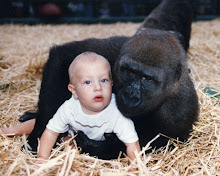Astronauts travelling to mars may be more like farmers who depend on having trays of crops in small storage compartments. Supplying enough food for a full round trip to the once red earth like planet called mars, with current engine technology would take a whole earth year at minimum to complete this round trip. It would be the biggest supply challenge for modern space explorers to date. So mission planners have compiled a range of data as to how this process could begin. But confusion sets in as a review to the days of pioneer there were out posts had been adopted. This was like mini satellites hook up with travelling capsules so to supply food water so fare rs then could continue the journey. The most efficient ways have all put been repudiated as inefficient to the modern idea. So it would be down to who could build a space station to travel this distance. This process would have to be done in space like the International space station. But this feat of human ingenuity would be seen as hugely costly if done by current methods. So the answer may be in sending missile parts and stores building supplies’ with question how to get into space. This could be done from jet fighter aeroplanes putting parts beside ISS in shape of missile like parts to complete a large space .transporter this could be partly an inflatable with a radioactive shield. It would have to be equipped for every eventually including emergency escape pods. Whatever the Marian concept, story of a transporter space ship for humans will probably have to be constructed in space.

A space station could stay in orbit over mars it would need to have a high technical garden to allow for oxygen waste and a gravitational field. This station needs to provide variety of tasty menus that lift spirits of first astronauts. The thing about space is the “Moon Buggy” is still fully functional ready to go even today. Only the earth climate is inductive to horrendous corrosion. Earth weather leaves almost everything into a corrosive waste like products; this is not a problem more of a challenge. As for having another Earth like planet it would have the benefit with almost zero corrosion, with only ware tare on parts this is minimal. So what can be constructed would be owned by the people or the country that constructed the station and it would be in a lasting state. These built the technology carry a beacon long after their creator. Still to have fully function technologies in space or orbit planets is a costly process. Most will be un-manned waiting for time when the argument, or for an industry is justified to put in place. But the greatest treats to human life come from an asteroid collision at near light speed with Earth. It would crack our planet like mars, so the argument to our future is look at our counterpart Mars and to this I just wouldn’t delay.

NASA Astronauts’ may go to mars in 2030 that 70 years after landing on moon and the mapping of the moon are so complex almost to the inch it spectacular. Moon landings provided industries that have generated countless sums of wealth example cars. Dr Maya Cooper from NASA space Food Systems Laboratory said a five year mission to mars would require almost £,145 KG 7,000 lbs food per person. It is a clear impediment to lots of mission scenarios. This was announced annual meeting of American chemical society in Denver Colorado. At art view we would like to see a Martian base on mars looking out for brother Earth. As the Moon is nearer it more of a possibility to the occupation of the moon but it has less resources than mars. Having a function base on another planet can do a lot, both in learning how planets interact this can give Human civilisation its biggest ever achievement and how to manage resources more efficiently here on Earth. The need for new approaches to implement a bio regenerative system to growing crops in space for consumption is apparent. Bio regenerative systems evolve growing multi task plants that not only provide food but releases oxygen for astronauts’ to breathe. These plants would remove carbon dioxide they exhale and alga that can purify water. Ideally these plants would have few inedible parts. Take up little room potential space crops would include bean sprouts, oats, lettuce, onions, potatoes, herbs, cabbages, grapes algae small fish many more. It couldn’t be any easier, it might just be like putting a rocket program in place for fighter aircraft and this could put current space technologies to shame.
 A space station could stay in orbit over mars it would need to have a high technical garden to allow for oxygen waste and a gravitational field. This station needs to provide variety of tasty menus that lift spirits of first astronauts. The thing about space is the “Moon Buggy” is still fully functional ready to go even today. Only the earth climate is inductive to horrendous corrosion. Earth weather leaves almost everything into a corrosive waste like products; this is not a problem more of a challenge. As for having another Earth like planet it would have the benefit with almost zero corrosion, with only ware tare on parts this is minimal. So what can be constructed would be owned by the people or the country that constructed the station and it would be in a lasting state. These built the technology carry a beacon long after their creator. Still to have fully function technologies in space or orbit planets is a costly process. Most will be un-manned waiting for time when the argument, or for an industry is justified to put in place. But the greatest treats to human life come from an asteroid collision at near light speed with Earth. It would crack our planet like mars, so the argument to our future is look at our counterpart Mars and to this I just wouldn’t delay.
A space station could stay in orbit over mars it would need to have a high technical garden to allow for oxygen waste and a gravitational field. This station needs to provide variety of tasty menus that lift spirits of first astronauts. The thing about space is the “Moon Buggy” is still fully functional ready to go even today. Only the earth climate is inductive to horrendous corrosion. Earth weather leaves almost everything into a corrosive waste like products; this is not a problem more of a challenge. As for having another Earth like planet it would have the benefit with almost zero corrosion, with only ware tare on parts this is minimal. So what can be constructed would be owned by the people or the country that constructed the station and it would be in a lasting state. These built the technology carry a beacon long after their creator. Still to have fully function technologies in space or orbit planets is a costly process. Most will be un-manned waiting for time when the argument, or for an industry is justified to put in place. But the greatest treats to human life come from an asteroid collision at near light speed with Earth. It would crack our planet like mars, so the argument to our future is look at our counterpart Mars and to this I just wouldn’t delay. NASA Astronauts’ may go to mars in 2030 that 70 years after landing on moon and the mapping of the moon are so complex almost to the inch it spectacular. Moon landings provided industries that have generated countless sums of wealth example cars. Dr Maya Cooper from NASA space Food Systems Laboratory said a five year mission to mars would require almost £,145 KG 7,000 lbs food per person. It is a clear impediment to lots of mission scenarios. This was announced annual meeting of American chemical society in Denver Colorado. At art view we would like to see a Martian base on mars looking out for brother Earth. As the Moon is nearer it more of a possibility to the occupation of the moon but it has less resources than mars. Having a function base on another planet can do a lot, both in learning how planets interact this can give Human civilisation its biggest ever achievement and how to manage resources more efficiently here on Earth. The need for new approaches to implement a bio regenerative system to growing crops in space for consumption is apparent. Bio regenerative systems evolve growing multi task plants that not only provide food but releases oxygen for astronauts’ to breathe. These plants would remove carbon dioxide they exhale and alga that can purify water. Ideally these plants would have few inedible parts. Take up little room potential space crops would include bean sprouts, oats, lettuce, onions, potatoes, herbs, cabbages, grapes algae small fish many more. It couldn’t be any easier, it might just be like putting a rocket program in place for fighter aircraft and this could put current space technologies to shame.
NASA Astronauts’ may go to mars in 2030 that 70 years after landing on moon and the mapping of the moon are so complex almost to the inch it spectacular. Moon landings provided industries that have generated countless sums of wealth example cars. Dr Maya Cooper from NASA space Food Systems Laboratory said a five year mission to mars would require almost £,145 KG 7,000 lbs food per person. It is a clear impediment to lots of mission scenarios. This was announced annual meeting of American chemical society in Denver Colorado. At art view we would like to see a Martian base on mars looking out for brother Earth. As the Moon is nearer it more of a possibility to the occupation of the moon but it has less resources than mars. Having a function base on another planet can do a lot, both in learning how planets interact this can give Human civilisation its biggest ever achievement and how to manage resources more efficiently here on Earth. The need for new approaches to implement a bio regenerative system to growing crops in space for consumption is apparent. Bio regenerative systems evolve growing multi task plants that not only provide food but releases oxygen for astronauts’ to breathe. These plants would remove carbon dioxide they exhale and alga that can purify water. Ideally these plants would have few inedible parts. Take up little room potential space crops would include bean sprouts, oats, lettuce, onions, potatoes, herbs, cabbages, grapes algae small fish many more. It couldn’t be any easier, it might just be like putting a rocket program in place for fighter aircraft and this could put current space technologies to shame.



